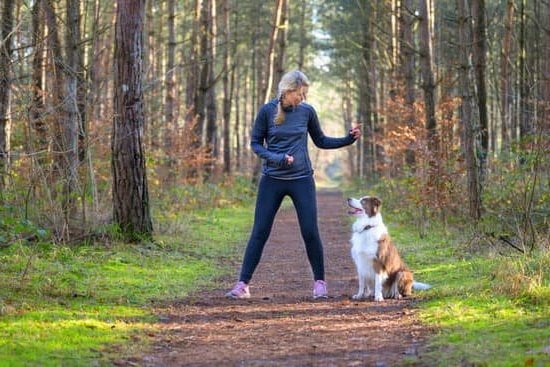Do you often find yourself struggling to control your dog while on a walk? Does your arm ache from constant pulling on the leash? If so, you are not alone. Many dog owners face the challenge of trying to train their dogs not to pull on the leash.
Leash pulling can make walks frustrating and even dangerous. It can strain your relationship with your furry friend and make outdoor activities less enjoyable. But fear not. With the right knowledge and techniques, you can teach your dog to walk calmly by your side and enjoy stress-free strolls together.
In this article, we will explore why training your dog to stop pulling is crucial, delve into the common reasons behind leash obsession, discuss how to choose the right leash and collar, and provide step-by-step training techniques. We will also explore strategies for addressing distractions, reinforcing good behavior, troubleshooting setbacks, maintaining consistency in training, and provide additional tips and resources from experts in the field.
By understanding the problem of leash pulling and implementing effective training methods, you can strengthen your bond with your furry companion and embark on enjoyable walks together. So let’s dive in and discover how to transform those frustrating walks into pleasant bonding experiences with our canine friends.
The Importance of Training
Training your dog to stop pulling on the leash is crucial for a variety of reasons. Not only does it make walks more enjoyable, but it also helps ensure the safety of both you and your furry friend. By teaching your dog proper leash manners, you can prevent accidents, reduce the risk of injury, and strengthen the bond between you and your pet.
Safety First: Preventing Accidents
One of the primary reasons why training your dog to stop pulling is so important is safety. Constant pulling can lead to accidents and injuries. If your dog suddenly lunges or pulls with great force, you may lose control of the leash and find yourself unable to react in time. This can result in falls, trips, or even getting dragged if your dog is strong enough.
Furthermore, excessive pulling can increase the risk of entanglement or tangling with other dogs, pedestrians, or objects such as trees or street signs. These situations not only put your dog in harm’s way but can also cause potential harm to others around you. By teaching your dog how to walk properly on a leash without pulling, you create a safer environment for everyone involved.
Bonding and Communication
Another reason why training your dog not to pull is crucial is because it enhances communication and strengthens the bond between you and your canine companion. Through consistent training sessions, you establish trust, understanding, and clear communication with your dog. They learn that they can rely on you for guidance during walks.
When dogs learn how to walk politely on a leash without pulling, they become more attuned to their handler’s cues and signals. The focus required for loose-leash walking encourages them to pay attention when you give commands or warnings while out on walks. This increased attentiveness not only fosters good behavior during walks but also carries over into other aspects of their training.
Moreover, by taking responsibility for teaching proper leash manners, you are actively participating in your dog’s physical and mental well-being. It shows your commitment as a responsible pet owner to provide guidance and structure in their life. This bond created through training can result in a more fulfilling relationship with your furry friend for years to come.
Understanding the Mind of a Pulling Dog
When it comes to leash pulling, it is essential to understand the reasons behind this behavior in order to effectively address and train your dog. Many dogs exhibit leash pulling due to various underlying factors, and being aware of these common reasons can help you develop appropriate strategies to tackle the issue.
One common reason behind leash obsession is simply excitement. Dogs are naturally energetic animals, and they may become overly enthusiastic during walks, leading them to pull on the leash in an attempt to explore their surroundings or reach something that caught their attention. This excitement can be exacerbated if your dog doesn’t get enough physical exercise and mental stimulation on a regular basis.
Another factor that contributes to leash pulling is lack of training or inconsistent training. If your dog has never been taught how to properly walk on a leash or if training sessions have been sporadic and inconsistent, they may not have learned the necessary skills to walk calmly by your side. Dogs thrive on consistency and repetition, so it’s important to dedicate time and effort towards consistent training sessions.
Fear or anxiety may also be a driving force behind leash pulling. Some dogs may resort to pulling when they feel uncomfortable or anxious in their environment.
Certain stimuli such as loud noises, other dogs, or unfamiliar surroundings can trigger fear responses in dogs, resulting in increased tension on the leash as they try to move away from the perceived threat. Recognizing signs of fear or anxiety in your dog’s body language can help you address those triggers and work towards desensitization through positive reinforcement techniques.
In order to further understand these common reasons behind leash obsession, refer back to the Step-by-Step Training Techniques: Building a Solid Foundation section for helpful strategies and tips on addressing these issues.
| Reasons for Leash Obsession | Strategies to Address |
|---|---|
| Excitement during walks | Provide regular exercise and mental stimulation, redirect attention with interactive toys or treats |
| Lack of training or inconsistent training | Dedicate regular and consistent training sessions, use positive reinforcement techniques to reward desired behavior |
| Fear or anxiety | Identify triggers, desensitize gradually through positive associations and counterconditioning |
Equipment Matters
Choosing the right leash and collar is essential when it comes to training your dog not to pull on the leash. The wrong equipment can actually encourage pulling behavior, so it’s important to understand what options are available and how they can help you in your training process.
When it comes to leashes, there are a few different types you can choose from: standard leashes, retractable leashes, and front-clip harnesses. Standard leashes are the most common and come in various lengths, typically ranging from 4 to 6 feet. They offer good control and are ideal for training purposes.
Retractable leashes, on the other hand, allow your dog more freedom to explore but may not provide optimal control during training sessions. If you opt for a retractable leash, make sure it has a lock or brake feature that allows you to easily control the length.
Front-clip harnesses are another great option for dogs that pull on the leash. These harnesses have a clip in the front instead of on the back like traditional harnesses or collars. This design redirects your dog’s attention towards you whenever they try to pull, making it easier for you to regain control during walks. Front-clip harnesses can be especially useful for larger dogs or those with a lot of pulling strength.
In addition to choosing the right leash, selecting an appropriate collar is equally important. Traditional buckle collars are widely used and suitable for most dogs. However, if your dog tends to pull excessively or has breathing difficulties such as brachycephalic breeds (e.g., Bulldogs or Pugs), using a collar that puts pressure around their neck should be avoided due to potential health risks. In these situations, a headcollar or no-pull harness might be better alternatives.
Overall, remember that every dog is unique and may respond differently to different pieces of equipment. It’s essential to find what works best for both you and your dog’s specific needs. Consulting with a professional dog trainer or veterinarian can provide valuable guidance in choosing the right leash and collar for your training journey.
| Type of Equipment | Advantages | Disadvantages |
|---|---|---|
| Standard Leash | Good control, ideal for training purposes | May not provide as much freedom of movement for your dog |
| Retractable Leash | Allows more freedom to explore, adjustable length | Less control during training sessions, potential entanglement hazard if not used properly |
| Front-Clip Harness | Redirects pulling behavior, provides better control for strong pullers, suitable for larger dogs | Slightly more challenging to put on compared to traditional collars and harnesses |
Step-by-Step Training Techniques
Building a solid foundation is essential when training your dog not to pull on the leash. This step-by-step guide will help you establish the groundwork for successful leash training.
- Start with Basic Obedience Commands: Before you can tackle leash pulling, it’s important to ensure that your dog understands basic obedience commands such as “sit” and “stay.” These commands lay the groundwork for teaching your dog to walk calmly on a leash. Practice these commands consistently in a controlled environment before moving on to leash training.
- Introduce Leash and Collar Gradually: Some dogs may feel uncomfortable wearing a collar or being attached to a leash initially. Start by introducing the collar and leash gradually, allowing your dog to get used to the sensation of being tethered. Offer treats and praise during this process to create positive associations.
- Use Positive Reinforcement Techniques: Positive reinforcement is key when training your dog not to pull on the leash. Reward your dog with treats, verbal praise, or affection every time they exhibit desired behavior, such as walking beside you without pulling. Consistency is vital; reward promptly so that your dog can make the connection between their behavior and the reward.
- Practice Controlled Walking Exercises: Set up controlled walking exercises in a quiet and familiar environment before progressing to busier areas. Begin with short walks, focusing on keeping your dog’s attention and rewarding them for walking calmly beside you without pulling. Gradually increase the duration of these walks as your dog demonstrates improvement.
By following these step-by-step training techniques, you can build a solid foundation for successful leash training with your dog. Remember that consistency, patience, and positive reinforcement are key throughout this process. With time and dedication, both you and your four-legged companion will enjoy pleasant walks together while maintaining a strong bond.
Teaching Loose Leash Walking
Teaching your dog to walk on a loose leash is an essential skill that every owner should aim to achieve. Walking calmly and in sync with your dog not only ensures their safety, but it also enhances the bond between you and your furry friend. In this section, we will discuss effective techniques for teaching loose leash walking and how to engage with your dog to encourage focus during walks.
One important aspect of teaching loose leash walking is establishing a strong foundation. Begin by ensuring that your dog is properly fitted with a comfortable harness or collar. This will allow you to have better control over their movements without causing discomfort or injury. Additionally, make sure that you are using a suitable leash length – one that provides enough freedom for your dog while still allowing you to maintain control.
To begin the training process, start in a low-distraction environment such as your backyard or a quiet park. Hold the leash loosely and let your dog take the lead initially, allowing them to explore their surroundings while keeping an eye on you. Whenever they begin to pull or tug at the leash, simply stop moving and wait until they calm down before continuing forward.
During this time, it’s crucial to engage with your dog by using positive reinforcement techniques such as treats and praise. Reward them whenever they exhibit desired behaviors, such as walking calmly beside you or looking up at you for guidance. By associating these behaviors with positive rewards, you are reinforcing the idea that staying close and focused on you results in pleasant experiences.
| Technique | Success Rate (%) |
|---|---|
| Clicker Training | 80% |
| Positive Reinforcement | 90% |
| Combined Positive/Negative Reinforcement | 70% |
Remember, teaching loose leash walking takes time and patience. It is important to remain consistent with your training efforts and gradually increase the level of distractions as your dog becomes more comfortable walking on a loose leash. By engaging with your dog and encouraging focus during walks, you will set them up for success and create an enjoyable walking experience for both of you.
Addressing Distractions
When it comes to leash training, one of the biggest challenges that dog owners face is dealing with distractions during walks. Dogs are naturally curious creatures, and their attention can easily be drawn away by various stimuli in the environment.
Whether it’s a squirrel running by, another dog walking past, or an enticing smell on the ground, these distractions can quickly lead to pulling on the leash. Fortunately, there are effective techniques to address these challenges and maintain control during walks.
One important strategy for overcoming distractions is to teach your dog the “Leave It” command. This command helps redirect your dog’s focus back to you when they become fixated on something else. Start by holding a treat in your hand and closing your fist.
Allow your dog to sniff and paw at your closed hand but refrain from opening it until they stop trying to get the treat. Once they lose interest and look away, reward them with praise and a treat from your other hand. Practice this exercise regularly until your dog reliably responds to the “Leave It” command both indoors and outdoors.
Another helpful technique for addressing distractions is using positive reinforcement training methods. Carry high-value treats with you during walks, such as small pieces of boiled chicken or cheese, and use them as rewards when your dog displays good behavior despite distractions.
For example, if another dog approaches while you are walking, ask your dog to sit or heel calmly beside you. When they comply with your request without pulling or lunging towards the other dog, immediately praise them and provide a reward.
In addition to training techniques, it’s essential to be prepared with the right equipment when facing distractions during walks. Using a front-clip harness or head collar can provide better control over your dog’s movements compared to traditional neck collars. These types of equipment distribute pressure evenly across your dog’s body instead of putting strain solely on their neck when they pull.
Additionally, consider using a longer leash that allows your dog more freedom to explore without feeling restricted. This can prevent them from pulling as they will have fewer opportunities to reach the end of the leash.
By implementing these techniques and utilizing appropriate equipment, you can effectively address distractions during walks and help your dog learn to remain focused on you. Remember, consistency is key when it comes to training, so be patient and continue practicing these techniques regularly. Over time, you will build a stronger bond with your dog and enjoy peaceful walks together.
Reinforcing Good Behavior
Reinforcing good behavior is an essential part of training your dog not to pull on the leash. By providing rewards and using positive reinforcement strategies, you can encourage your dog to continue behaving correctly during walks. This section will explore different techniques and approaches for reinforcing good behavior.
Choosing the Right Rewards
One of the most effective ways to reinforce good behavior in dogs is by offering rewards. The key is to find what motivates your dog the most. Some dogs are food motivated and will respond well to treats or small pieces of their favorite food. Others may be more interested in playing with a favorite toy or receiving praise and affection from their owner. Experiment with different types of rewards to see what gets your dog excited and motivated.
Timing is Everything
When it comes to using rewards for reinforcement, timing is crucial. Dogs have a short attention span, so it’s important to offer the reward immediately after they exhibit the desired behavior. This helps them understand what they are being rewarded for and reinforces the connection between the action and the reward. Be consistent in your timing, and try not to let too much time pass between the desired behavior and the reward.
Gradually Reducing Rewards
While it’s important to continue rewarding good behavior during training, eventually, you’ll want to wean your dog off constant rewards. As your dog becomes more reliable in walking without pulling on the leash, start reducing both the frequency and size of rewards.
Instead of offering a treat every time they walk nicely beside you, switch to intermittently giving rewards as a pleasant surprise. This will help maintain their motivation while also encouraging them to focus on walking correctly without constantly relying on treats or rewards.
Troubleshooting
Dealing with Setbacks
While training your dog not to pull on the leash, it is important to remember that setbacks are a normal part of the process. It is unrealistic to expect your dog to learn overnight and never have any slip-ups. When faced with setbacks, it is essential to remain patient and persistent in your training efforts.
One common setback is when your dog starts pulling again after showing progress. This can be frustrating, but it’s important not to get discouraged. Remember that dogs are creatures of habit, and they may fall back into old behaviors if not consistently reinforced with training. In this case, go back a step or two in your training plan and reinforce the basics before gradually progressing again.
Another setback you may encounter is when your dog reacts to distractions despite having mastered loose leash walking in less distracting environments. It’s important to understand that dogs have different thresholds for distractions, and what may seem insignificant to us can be highly stimulating for them. To address this, gradually expose your dog to increasingly challenging distractions while using positive reinforcement techniques to help them remain focused on you.
Avoiding Common Training Mistakes
When training your dog not to pull on the leash, certain mistakes can hinder their progress. By being aware of these common pitfalls, you can ensure a more successful training experience.
One mistake often made by dog owners is relying too heavily on corrective measures or punishment-based techniques. While some forms of correction may be necessary in certain situations, it is crucial to primarily focus on positive reinforcement methods during leash training. Punishment can create fear or anxiety in dogs and may lead to even more pulling behavior as they try to escape the discomfort.
Inconsistency is another common mistake that undermines leash training efforts. Dogs thrive on routine and clear expectations, so it’s important for everyone involved in the training process – including family members or other caregivers – to be consistent with the rules and expectations set forth. This means reinforcing the same behaviors and using the same training techniques across all walks.
Lastly, it’s important to avoid overloading your dog with too much information all at once. Break down the training process into small, achievable steps, gradually increasing difficulty as your dog becomes proficient at each level. Rushing through the training or expecting too much progress in a short period can lead to frustration for both you and your dog. Remember that patience is key in successful leash training.
By addressing setbacks promptly and avoiding common training mistakes, you will be better equipped to handle any challenges that arise during the leash training process. With persistence, consistency, and positive reinforcement techniques, you’ll be well on your way to teaching your dog not to pull on the leash and enjoying pleasant walks together.
Consistency and Patience
Maintaining a consistent and patient approach is crucial when it comes to leash training your dog. Consistency helps reinforce the desired behavior and ensures that your dog understands what is expected of them during walks. Patience is necessary because leash training takes time and effort, and it’s important not to get frustrated or give up on your dog. In this section, we will discuss the importance of consistency and patience in maintaining a healthy walking routine.
Consistency involves using the same commands, cues, and techniques throughout your dog’s training. This helps your dog understand what you want from them and allows them to form associations between certain behaviors and their consequences. Consistency also applies to your own behavior as a handler.
For example, if you usually allow your dog to pull on the leash sometimes but not others, it can cause confusion for your pet. Make sure everyone who walks your dog uses the same commands and follows the rules consistently.
Patience is key because leash training takes time and practice. Your dog won’t learn how to walk politely on a leash overnight, so it’s important to be patient with them as they learn new skills.
Don’t rush the process or expect too much too soon – instead, focus on small steps of progress and celebrate each milestone along the way. Remember that every dog is different, so some may take longer to pick up on leash training than others.
To maintain a healthy walking routine, it’s essential to make daily walks a priority in both yours and your dog’s schedule. Consistency in regular exercise helps keep your pet physically fit while providing mental stimulation as well. Plan for enough time each day for a walk where you can focus solely on leash training without other distractions or time constraints. By setting aside dedicated walk times each day, you create a routine that reinforces good behavior consistently.
Additional Tips and Resources
Now that you have a solid foundation in leash training and have started working on loose leash walking with your dog, there are some additional tips and resources that can help you along the way. Leash training can sometimes be a challenging process, but with the right guidance and tools, you can achieve success.
Seek Expert Advice
If you’re facing difficulties in leash training your dog or if you want to learn more about effective techniques, it can be helpful to seek advice from experts. Professional dog trainers or behaviorists can provide valuable insights and personalized guidance based on your dog’s specific needs.
They can assess any underlying behavioral issues or provide tailored strategies to address certain challenges you may be facing during walks. Additionally, joining online forums or communities dedicated to dog training can connect you with experienced trainers and fellow pet owners who have encountered similar experiences.
Utilize Training Tools
There are various tools available in the market that can assist in successful leash training. Harnesses such as front-clip harnesses or head halters are designed to redirect pulling behavior and distribute pressure evenly across the body, discouraging dogs from pulling excessively.
Using a longer leash during training sessions can also provide your dog with more freedom while still maintaining control. Treat pouches or treat-dispensing toys are practical tools for rewarding your dog during walks without constantly reaching into your pocket or bag.
Consider Clicker Training
Clicker training is a positive reinforcement technique that uses a clicker sound followed by treats to mark and reward desired behaviors. This method helps establish clear communication between you and your dog during leash training exercises. By associating the clicker sound with rewards, it becomes a powerful tool for reinforcing good walking habits such as loose leash walking, checking in with you, or ignoring distractions.
Be Patient and Persistent
Remember that leash training is a learning process for both you and your dog. It may take time for your dog to fully grasp the concept of loose leash walking, especially if they have a strong pulling habit. Stay patient, consistent, and positive throughout the training journey. Celebrate even small improvements or moments of successful loose leash walking. With persistence and dedication, your dog will eventually learn to walk politely on a leash.
Utilizing expert advice, utilizing appropriate training tools, incorporating clicker training techniques, and maintaining patience and persistence will greatly contribute to the success of your leash training efforts. By implementing these additional tips and resources into your training routine, you’ll be better equipped to address any challenges that arise during walks and strengthen the bond between you and your furry companion.
Conclusion
Training your dog not to pull on the leash is a process that requires time, patience, and consistency. It can be challenging at times, but the rewards are well worth it. By following the step-by-step training techniques outlined in this article and addressing any setbacks or common training mistakes along the way, you can successfully teach your dog to walk calmly on a leash.
As you work towards teaching your dog loose leash walking and overcoming distractions during walks, it’s important to remember the significance of reinforcing good behavior. Positive reinforcement strategies and rewards play a vital role in shaping your dog’s behavior and motivating them to continue making progress. Celebrate your dog’s achievements with praise, treats, or toys, letting them know that they are doing a great job.
Beyond just having a well-behaved walking companion, leash training presents an opportunity for bonding with your dog. Walking together creates shared experiences and strengthens the bond between you and your furry friend. Use this time to engage with your dog, providing guidance and encouragement when they demonstrate focus and attention during walks.
Remember to maintain consistency in your training routine. Dogs thrive on structure and repetition. By consistently practicing loose leash walking techniques and setting clear expectations for your dog, you are more likely to achieve long-lasting results.
Lastly, always seek additional tips and resources from experts in the field of canine behavior if needed. Leash training can be challenging for some dogs depending on their individual temperament or past experiences. Seeking professional guidance or utilizing training tools such as harnesses or head collars may greatly assist you in achieving success.
In conclusion, celebrating your dog’s achievements throughout the leash training process is essential for both you and your furry companion. By building a strong bond based on trust, positive reinforcement, consistency, and patience, you can enjoy stress-free walks together while strengthening the relationship between you and your beloved pet.
Frequently Asked Questions
How long does it take to train a dog to not pull on leash?
The time it takes to train a dog to not pull on leash can vary depending on several factors such as the dog’s age, breed, and prior training experience. Generally, it can take anywhere from a few weeks to several months of consistent and daily training sessions to see significant improvement in leash manners.
Consistency, patience, and positive reinforcement are key elements in this training process. It is important to remember that every dog is unique and learns at their own pace, so some dogs may require more time and practice than others.
Do dogs naturally stop pulling on leash?
Dogs do not naturally stop pulling on leash without proper training and guidance from their owners. Pulling on the leash is a natural behavior for dogs as they explore their surroundings or try to reach something they find interesting.
Additionally, if a dog has developed a habit of pulling and has not been trained otherwise, they will continue pulling on the leash out of sheer habit. Therefore, it is crucial for owners to actively teach their dogs proper leash manners through consistent training exercises.
Do dogs grow out of leash pulling?
Dogs do not typically grow out of leash pulling on their own without intervention from the owner. While some puppies may exhibit less pulling behavior as they mature into adulthood, this cannot be solely relied upon as a solution for addressing leash-pulling habits.
Without proper guidance and consistent training from their owners, dogs are unlikely to spontaneously overcome this behavior as they age. It is important for owners to address any leash-pulling behaviors early on by providing appropriate training techniques and reinforcing positive walking behaviors consistently over time.

Welcome to the blog! I am a professional dog trainer and have been working with dogs for many years. In this blog, I will be discussing various topics related to dog training, including tips, tricks, and advice. I hope you find this information helpful and informative. Thanks for reading!





